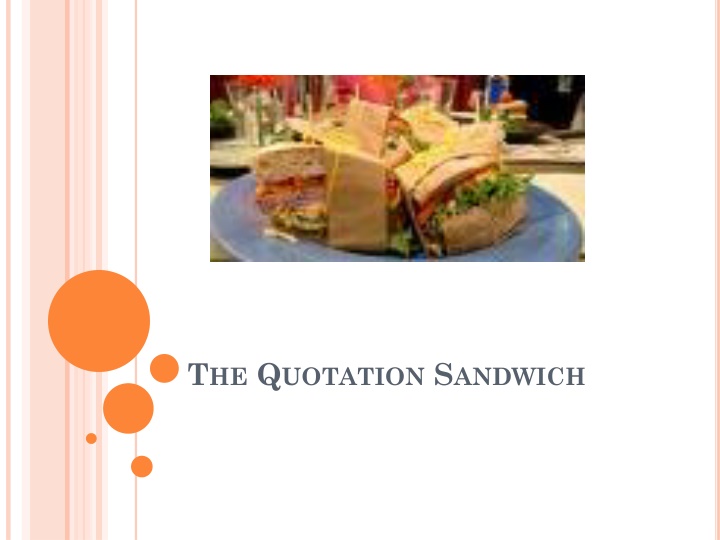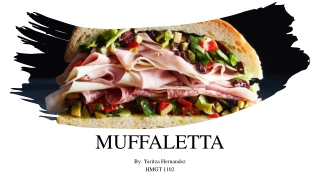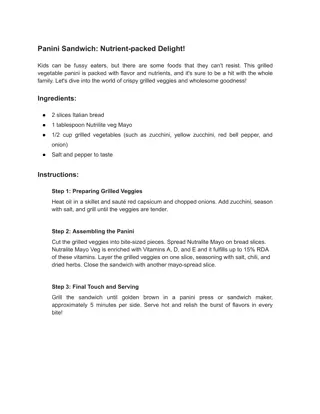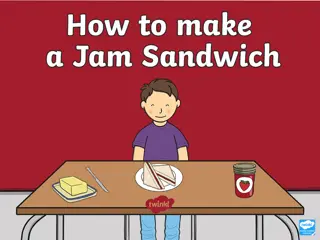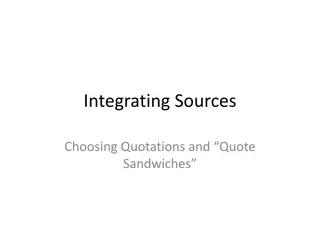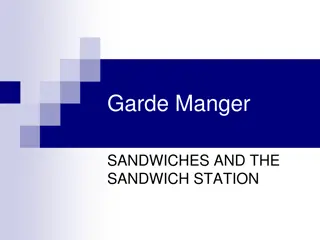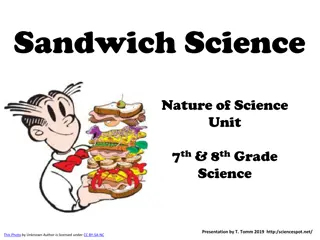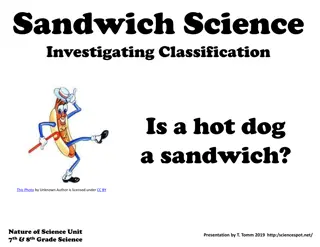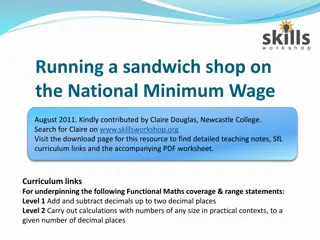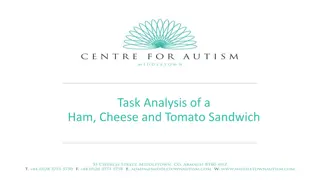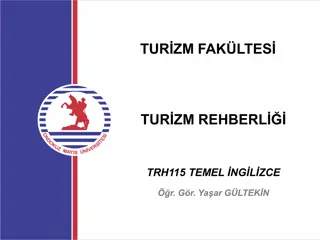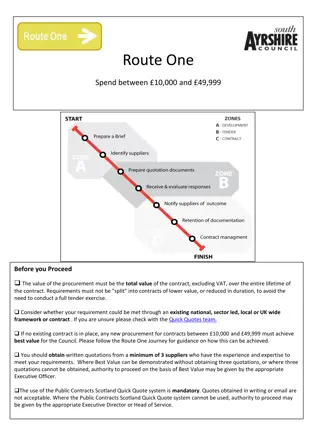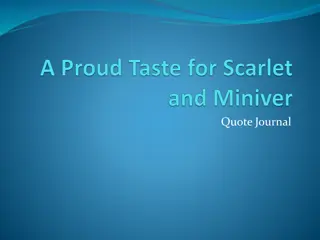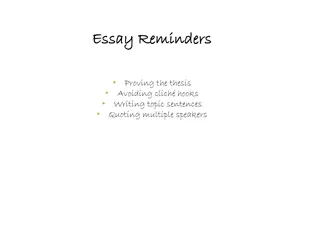Crafting the Perfect Quote Sandwich
Learn how to construct an effective "quote sandwich" by following steps like starting with a strong topic sentence, adding optional linking sentences, introducing the quotation with proper attribution, and presenting the quote within the text. This guide provides detailed instructions and examples for each component of the quote sandwich, helping you enhance the impact and credibility of your quotes in written work.
Download Presentation

Please find below an Image/Link to download the presentation.
The content on the website is provided AS IS for your information and personal use only. It may not be sold, licensed, or shared on other websites without obtaining consent from the author.If you encounter any issues during the download, it is possible that the publisher has removed the file from their server.
You are allowed to download the files provided on this website for personal or commercial use, subject to the condition that they are used lawfully. All files are the property of their respective owners.
The content on the website is provided AS IS for your information and personal use only. It may not be sold, licensed, or shared on other websites without obtaining consent from the author.
E N D
Presentation Transcript
TOPIC SENTENCE: THE BREAD Begin your quote sandwich with a sentence that discusses the major point that your quote will support. This the foundation of your sandwich, so it should be strong, sturdy and interesting: think multi-grain versus Wonder bread.
OPTIONAL LINKING SENTENCE: THE CONDIMENT A smooth and flavorful sentence may be used to connect your main point to the quotation. A linking sentence might briefly summarize the subject about which the quotation speaks more specifically. Example: In a heated exchange with members of the congressional oversight committee, Steve Jobs claimed his company had not violated anti-trust laws.
INTRODUCTION OF THE QUOTATION: THE LETTUCE AND TOMATO Use a signal phrase (lettuce) to introduce the speaker or author of the quote you are using. Use an appositive (tomato) to introduce the speaker s credentials or qualifications Example: Jobs, longtime head of Apple, claimed, We strive to follow the law (Chester 12).
INTRODUCTION OF THE QUOTATION: THE LETTUCE AND TOMATO Another example: According to Dr. John Smith [signal phrase], respected physician [appositive] Note: once you have used the sources full name, you can refer to him/her by last name only for the remainder of your paper. Smith claims . . . Smith writes . . .
INTRODUCTION OF THE QUOTATION: THE LETTUCE AND TOMATO You may add other identifying information about the quoted expert here as well (think other toppings like pickles, peppers etc.) According to Dr. John Smith, a respected physician, whose son died of a heart attack at 40 [signals ethos/bias=pickles], believes, awareness is the key (27). Smith now volunteers at community centers, giving lectures about the dangers of high cholesterol in honor of his son (32). [pathos appeal = onions]
QUOTATION: THE MEAT Encompassed by quotation marks, as, for example: This is where you put your quotation if it is under four lines in your text (Surname #). With the lettuce/tomato, it would look like this: According to Dr. John Smith, respected physician, This quotation perfectly supports my argument while stating important new information (32).
CITATION: CHEESE List the citation in MLA format. This is just as important as checking the expiration date on all your cold cuts without the citation, the meat/cheese is NO GOOD. Remember, if you have used the speaker s name in the paragraph already, you only need to include the page number in parentheses.
POINT: THE BREAD Immediately following the citation, explain why you have used this quotation or how it relates to the larger issues (including your thesis) of your paper. This explanation, coupled with the topic sentence, comprises the most important part of your paragraph. This is where YOUR ideas shine through. Without both pieces of bread, the sandwich falls apart! Make your logical connections explicit. Don t quote dump!
EXAMPLE: Presently in American culture, we worship thinness. [bread] Just as unrealistic standards have driven some people to health problems, it has also produced a new attitude towards fitness. [condiment] According to Roberta Seid, a lecturer at USC: [lettuce/tomato] We have elevated the pursuit of a lean, fat free body into a new religion (498). The creed of this new religion is I eat well, watch my weight, and exercise [meat] (498). [cheese] In our new church, then, Richard Simmons an apostle and Little Debbie, the new Satan. Just like religion, the cult of thinness can become dangerous by celebrating sacrifice and creating unrealistic role models. [bread]
ADDING A QUOTE SANDWICH TO A PARAGRAPH A quote sandwich a paragraph Quote sandwich support for topic sentence
TOPIC SENTENCES (PAGE 470-480 A&B) Meaning or point for each paragraph Readers expect them at the start of the paragraph Signals the main idea of following section/paragraph Like thesis statements, you often need to go back to revise them after you have written a draft to ensure paragraph unity Using transitions, use topic sentences to link old information to new information: topic and stress positions (pg 478) (forecast new topic at end of paragraph)
TOPICSENTENCESAND TRANSITION PHRASES (A&B 474-481) paragraph, topic sentences can also help to create smooth transitions between paragraphs. In addition to providing a clear topic for a This topic sentence states paragraph will discuss transitions Links old information (topic sentences from previous slides) to new information (transitions) Clear transition words or phrases signal change in topic to savvy reader and the relationship between topics (chart pg 475)
TRANSITIONSBETWEEN LARGE SECTIONS Topic/transition sentences work between paragraphs, but larger sections need larger transitions. Major themes of your papers with synthesis questions Headings (pg 477) Resting places (pg 476) Avoid unclear/ambiguous use of this or risk confusing readers
SIMILAR STRUCTURES Small Medium Large Topic sentence Synthesis answer Thesis statement Intro of quotes Intro to sub-topics Introduction paragraph Support/quote Paragraphs of support Sub-sections Your interpretation/brea d Paragraph summarizing findings Conclusions
POSSIBLE PARAGRAPH CONSTRUCTION paragraph.Point quote will support [bread] Linking sentence [condiment] Introduction of the quotation, additional information, [lettuce/tomato/pickles] Quote [meat] (2) [cheese]. Linking sentence, new quote same author [condiment] Quote [meat] (70) [cheese]. Clear, explicit connection between quotes and main point of section. [bread] Transition to second phase of point [bread] Linking sentence [condiment] Introduction of the quotation, additional information, [lettuce/tomato/pickles] Quote [meat] (498) [cheese]. Clear, explicit connection between quote and main point of section. [bread]. Forecast new topic Transition/topic sentence. Main point of paragraph. Transition/topic sentence. Main point of
POSSIBLE SECTIONOUTLINE Heading- 2nd section (3 pages) Resting place transition: last section said this, thesis indicated 3 supporting arguments, this is the second. Synthesis statement Introduction paragraph background readers might need to know about new topic Support paragraph 1- 2 quote sandwiches Support paragraph 2- 3 quote sandwiches Support paragraph 3- 2 quote sandwiches Counter argument- 3 quote sandwiches Summary paragraph- main points of argument and how evidence in section supports thesis Heading-3rd section
